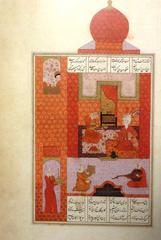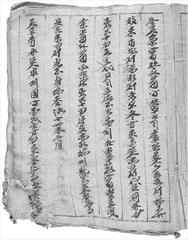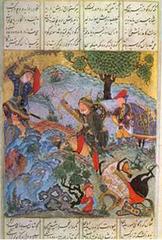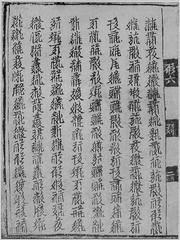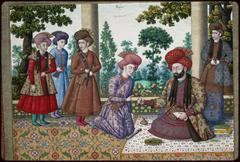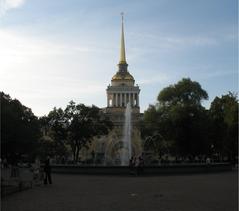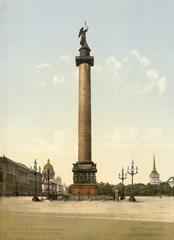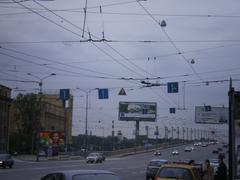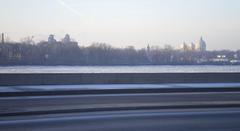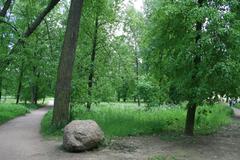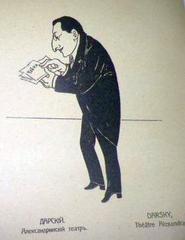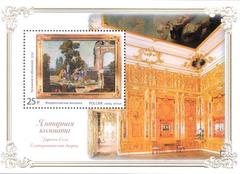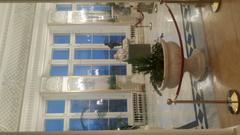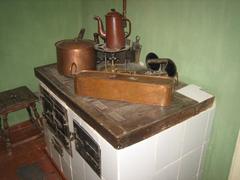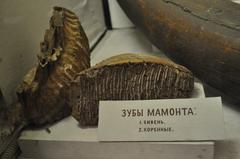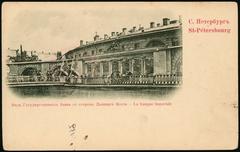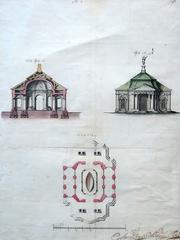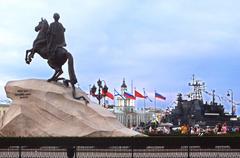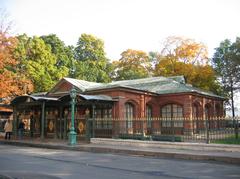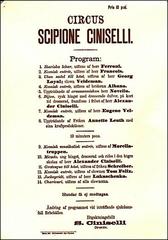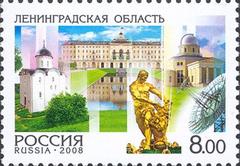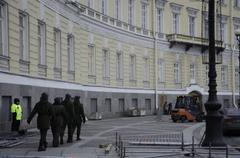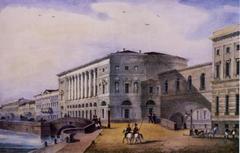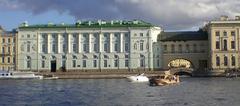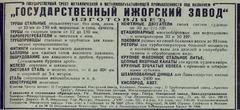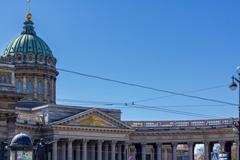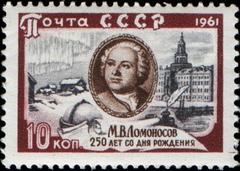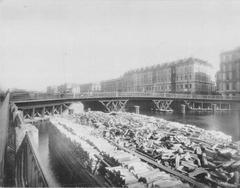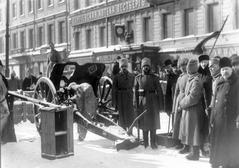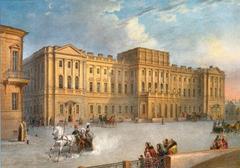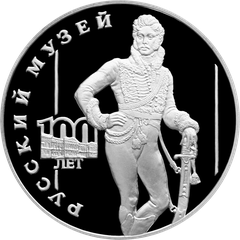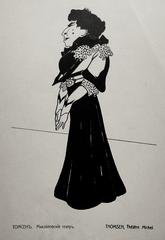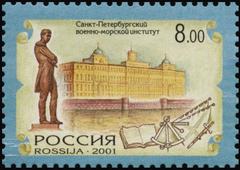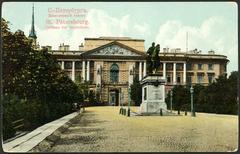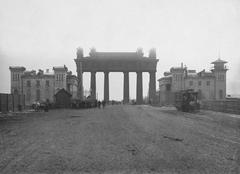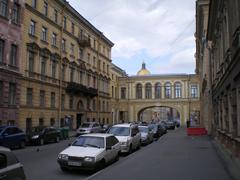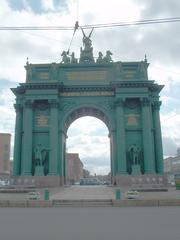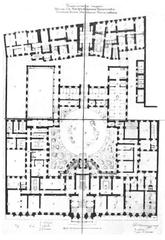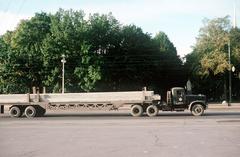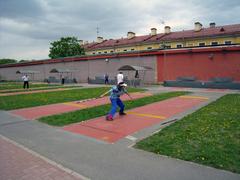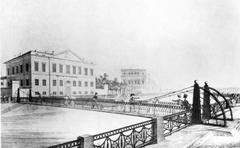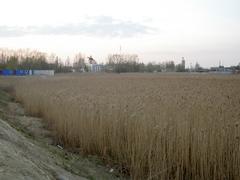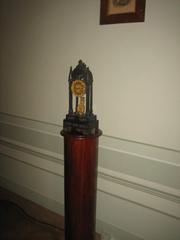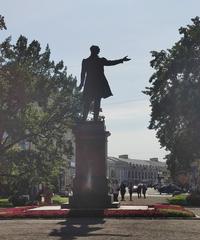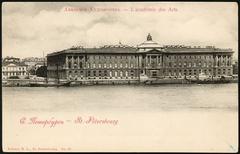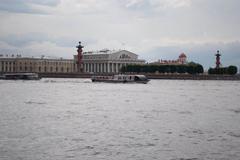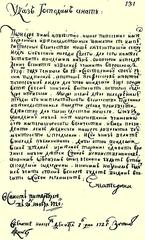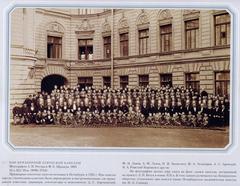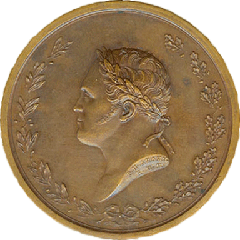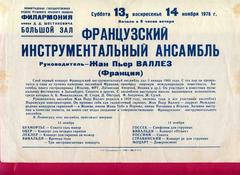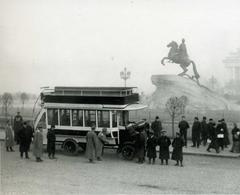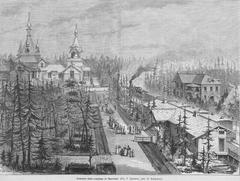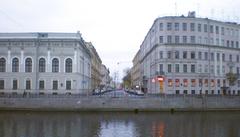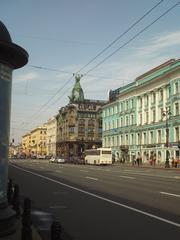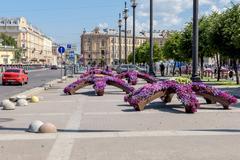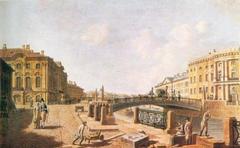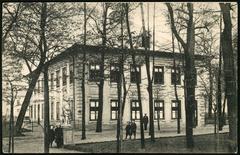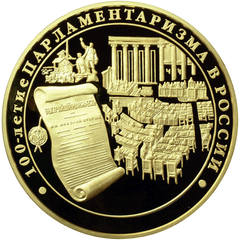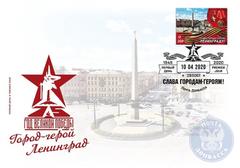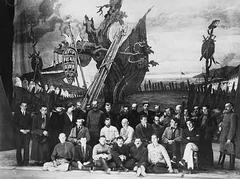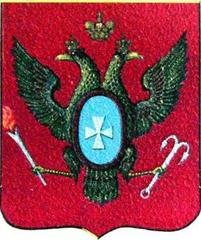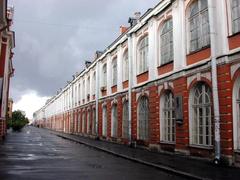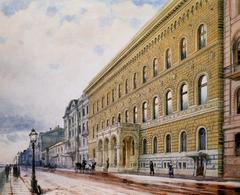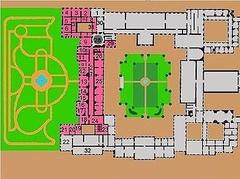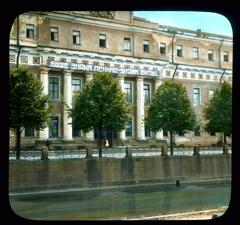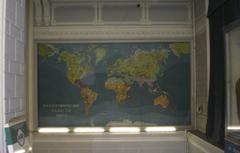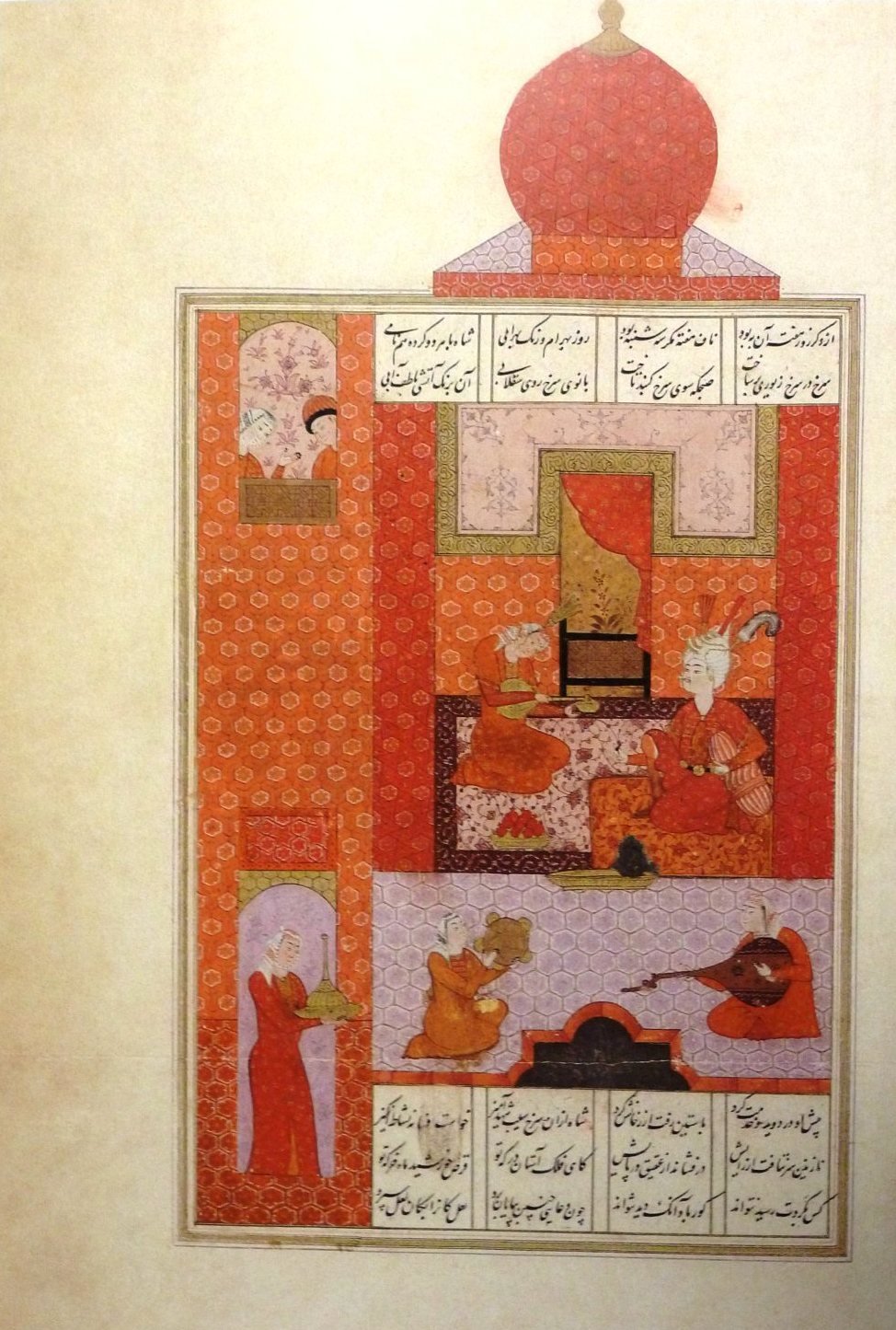
Institute Of Oriental Manuscripts Of The Russian Academy Of Sciences
Comprehensive Guide to Visiting New Michael Palace Saint Petersburg Russia
Date: 22/07/2024
Introduction
Nestled along the picturesque banks of the Neva River in Saint Petersburg, Russia, Ново-Михайловский дворец, or New Michael Palace, stands as an opulent testament to the grandeur of the Russian imperial family. Commissioned by Grand Duke Michael Nikolaevich, the youngest son of Tsar Nicholas I, and constructed between 1857 and 1862, this architectural gem was designed by the renowned architect Andrei Stackenschneider. His eclectic style masterfully combines elements of Renaissance, Baroque, and Classicism, creating a unique and harmonious structure (Saint Petersburg Encyclopedia).
Initially intended to serve as a residence for the Grand Duke and his family, the palace has borne witness to numerous significant historical events and housed various notable occupants. From its role during the Russian Revolution to its repurposing in the Soviet era, the New Michael Palace’s rich history is intricately woven into the fabric of Saint Petersburg’s cultural and political landscape (Institute of Oriental Manuscripts).
Today, the New Michael Palace is not only a historical landmark but also a vibrant center of cultural and academic activity. It houses the Institute of Oriental Manuscripts, one of the leading research institutions in the field of Oriental studies, and continues to attract scholars, tourists, and history enthusiasts from around the world. This comprehensive guide aims to provide essential information for visitors, including historical insights, architectural highlights, ticket prices, visiting hours, travel tips, and nearby attractions, ensuring a memorable and enriching experience for all who explore this magnificent palace.
Table of Contents
- Introduction
- History of New Michael Palace
- Visitor Information
- Special Features
- Preservation and Modern Use
- FAQ
- Conclusion
History of New Michael Palace
Construction and Early Years
The Ново-Михайловский дворец, or New Michael Palace, is an architectural gem located in Saint Petersburg, Russia. The palace was commissioned by Grand Duke Michael Nikolaevich of Russia, the youngest son of Tsar Nicholas I, and was constructed between 1857 and 1862. The design was entrusted to the renowned architect Andrei Stackenschneider, who was known for his eclectic style that combined elements of Renaissance, Baroque, and Classicism (Saint Petersburg Encyclopedia).
The palace was named to distinguish it from the Mikhailovsky Palace, which was built for Grand Duke Michael Pavlovich, another son of Tsar Paul I. The New Michael Palace was intended to serve as a residence for Grand Duke Michael Nikolaevich and his family. The construction of the palace was part of a broader trend during the mid-19th century, where members of the Russian royal family commissioned grand residences that showcased their wealth and status.
Architectural Significance
The New Michael Palace is a prime example of mid-19th century Russian architecture. Andrei Stackenschneider’s design incorporated a variety of architectural styles, creating a unique and harmonious structure. The palace features a symmetrical layout with a central block flanked by two wings. The façade is adorned with intricate stucco work, Corinthian columns, and elaborate cornices, reflecting the influence of Renaissance and Baroque architecture (Saint Petersburg Encyclopedia).
One of the most striking features of the palace is its grand staircase, which is considered one of the finest examples of interior design from this period. The staircase is made of white marble and is illuminated by a large skylight, creating a sense of grandeur and opulence. The interior of the palace is equally impressive, with richly decorated rooms featuring gilded ceilings, ornate chandeliers, and luxurious furnishings.
Historical Events and Occupants
Throughout its history, the New Michael Palace has been the site of numerous significant events and has housed various notable occupants. After the death of Grand Duke Michael Nikolaevich in 1909, the palace continued to be used by his descendants until the Russian Revolution of 1917. During the revolution, the palace was seized by the Bolsheviks and was subsequently used for various governmental purposes.
In the early 20th century, the palace served as the headquarters for the People’s Commissariat for Foreign Affairs. It was during this period that the palace witnessed some of the most tumultuous events in Russian history, including the signing of the Treaty of Brest-Litovsk in 1918, which marked Russia’s exit from World War I (Saint Petersburg Encyclopedia).
Soviet Era and Restoration
During the Soviet era, the New Michael Palace underwent significant changes. The palace was repurposed to serve various administrative functions, and many of its original interiors were altered or destroyed. Despite these changes, the palace remained an important architectural and historical landmark in Saint Petersburg.
In the post-Soviet period, efforts were made to restore the palace to its former glory. Extensive restoration work was carried out to repair the damage caused during the Soviet era and to preserve the palace’s historical and architectural significance. Today, the New Michael Palace is part of the Russian Academy of Sciences and houses the Institute of Oriental Manuscripts (Institute of Oriental Manuscripts).
Cultural and Historical Impact
The New Michael Palace holds a special place in the cultural and historical landscape of Saint Petersburg. It is not only a testament to the architectural prowess of Andrei Stackenschneider but also a symbol of the opulence and grandeur of the Russian imperial family. The palace’s rich history and its association with significant historical events make it an important site for both locals and tourists.
The palace’s location on the banks of the Neva River adds to its allure, offering stunning views and a picturesque setting. Visitors to the palace can explore its beautifully restored interiors, learn about its fascinating history, and appreciate its architectural splendor. The New Michael Palace is a must-visit destination for anyone interested in Russian history and architecture (Saint Petersburg Encyclopedia).
Visitor Information
Ticket Prices
Visitors can purchase tickets to the New Michael Palace at the entrance or online through the official website. Prices vary depending on the type of tour and access to special exhibits. It is advisable to check the official website for the most up-to-date pricing information.
Opening Hours
The New Michael Palace is open to the public from Tuesday to Sunday, with visiting hours typically from 10:00 AM to 6:00 PM. It is closed on Mondays and public holidays. Be sure to verify the hours before planning your visit as they may change seasonally.
Travel Tips
- Getting There: The palace is easily accessible by public transportation, with several bus and metro routes stopping nearby. Taxis and ride-sharing services are also available.
- Best Time to Visit: To avoid the crowds, consider visiting early in the morning or late in the afternoon.
- What to Bring: Comfortable walking shoes are recommended, as there is much to explore within the palace grounds.
Nearby Attractions
- The Hermitage Museum: One of the largest and oldest museums in the world, located just a short distance from the palace.
- Peter and Paul Fortress: A historic fortress that houses several museums and offers beautiful views of the city.
- Summer Garden: A beautiful garden featuring classical sculptures and fountains, perfect for a leisurely stroll.
Accessibility
The New Michael Palace is committed to providing access to all visitors. Wheelchair ramps and elevators are available, and staff are on hand to assist those with mobility issues.
Special Features
Guided Tours
Guided tours are available in multiple languages and provide a comprehensive overview of the palace’s history, architecture, and significance. Booking in advance is recommended, especially during peak tourist seasons.
Photographic Spots
The palace offers numerous picturesque spots for photography, including the grand staircase, the richly decorated rooms, and the scenic views of the Neva River. Photography is allowed, but be mindful of any restrictions in certain areas.
Special Events
Throughout the year, the New Michael Palace hosts various special events, including exhibitions, cultural performances, and academic conferences. Check the palace’s official website for a calendar of upcoming events.
Preservation and Modern Use
Today, the New Michael Palace continues to be a site of cultural and academic importance. The Institute of Oriental Manuscripts, which is housed in the palace, is one of the leading research institutions in the field of Oriental studies. The institute’s extensive collection of manuscripts and artifacts attracts scholars and researchers from around the world, further cementing the palace’s status as a center of learning and culture (Institute of Oriental Manuscripts).
Efforts to preserve and maintain the palace are ongoing, with regular restoration work being carried out to ensure that this historic landmark remains in pristine condition. The palace is also open to the public, offering guided tours that provide visitors with an in-depth understanding of its history and significance.
FAQ
What are the visiting hours for New Michael Palace? The palace is open from Tuesday to Sunday, 10:00 AM to 6:00 PM, and is closed on Mondays and public holidays.
How much are the tickets for New Michael Palace? Ticket prices vary depending on the type of tour and access to special exhibits. Check the official website for the most current pricing information.
Is the palace accessible to visitors with mobility issues? Yes, the palace is equipped with wheelchair ramps and elevators, and staff are available to assist visitors with mobility issues.
Are guided tours available? Yes, guided tours are offered in multiple languages and can be booked in advance.
What are some nearby attractions? The Hermitage Museum, Peter and Paul Fortress, and Summer Garden are all located nearby and are worth a visit.
Conclusion
The New Michael Palace, with its rich history, architectural grandeur, and cultural significance, remains one of Saint Petersburg’s most cherished landmarks. From its inception as a royal residence to its current role as a center of scholarly activity, the palace embodies the opulence and historical depth of the Russian imperial era (Saint Petersburg Encyclopedia). Its meticulously restored interiors, coupled with its picturesque location along the Neva River, offer visitors a unique opportunity to step back in time and immerse themselves in the grandeur of 19th-century Russia.
For those planning a visit, the palace’s extensive visitor amenities, including guided tours, special events, and accessibility features, ensure a comfortable and informative experience. Nearby attractions such as the Hermitage Museum and Peter and Paul Fortress further enhance the cultural journey, making a trip to the New Michael Palace a must for anyone visiting Saint Petersburg (Visit Petersburg).
In conclusion, the New Michael Palace is more than just a historical site; it is a living testament to the architectural prowess and cultural richness of Russia’s past. Whether you are a history enthusiast, an architecture aficionado, or a curious traveler, the New Michael Palace offers a captivating glimpse into the opulent world of the Russian imperial family. Plan your visit today and discover the timeless beauty and historical significance of this iconic palace.
References
- Saint Petersburg Encyclopedia. (n.d.). New Michael Palace. Retrieved from http://www.encspb.ru/object/2804002340
- Institute of Oriental Manuscripts. (n.d.). Retrieved from http://www.orientalstudies.ru/eng/
- Visit Petersburg. (n.d.). Retrieved from https://www.visit-petersburg.ru/en/
